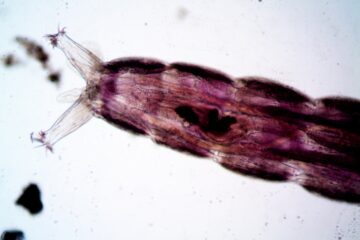![]()
Introduction:
Forensic Science is the application of science to law by collecting, preserving, and analyzing the scientific evidence during the period of investigation. Collection and analysis of such evidence are undertaken by forensic scientists who testify as expert witnesses during trials and work for either prosecution or defense. Forensic science uses scientific methods and processes for solving the crime. It helps in evaluating various aspects including DNA, fingerprints, chemicals, toxins, blood, semen, etc.[1] Forensic Science is a very new and upcoming field in developing countries like India.
This article talks about the development of forensic science in India and its relationship with criminal prosecution. It will also discuss various provisions of law and cases which relate to forensic science.
Historical Development
In Ancient India, there was a lack of forensic science methods and practices, which usually helped criminals in escaping from punishments. Criminal trials were usually based on the confessions and testimony of witnesses. However, medical opinions were applied to various requisites of law.[2] In the 19th century, when cases of poisoning deaths were increasing, a need was felt to detect and analyze the various poisons absorbed by the human body. So the first chemical laboratory was established in India in 1849 in the Presidency town of Madras to analyze such cases. Later various other laboratories were formed to analyze viscera, blood, semen, food, drugs, toxins, etc. to support the criminal justice system.
In 1897, the first fingerprint bureau was set up in Calcutta for the identification of criminals. In response to the growing demands for the use of technology in solving crime, the government established its first Forensic DNA Typing facility in Calcutta in 1998. It helped in solving various cases relating to murder, rape, paternity disputes, and organ transplantation.[3]
Role of Prosecution
There are four important components of the Criminal Justice System in any country, namely, investigating agency, judiciary, prosecution, and Prison & Correctional wing. The main role of Investigating agency i.e., police is to register complaints, investigate them and forward them for trials. These cases are then adjudicated by the Judiciary. The main role of the Prosecution wing is to prosecute cases in the court of law. It the state who appoints a public prosecutor and on whose behalf he conducts prosecution.
As a prosecutor is an officer of the court, it’s his duty to portray a truthful picture before the Court. Even though he appears on behalf of the state, it’s his duty to look after that the accused does not wrongfully suffer. He should act impartially and truthfully so that justice can be served. In the case of Shiv Kumar Paswan v. State of Bihar and Ors.,[4] the court has explained the role and functions of a public prosecutor. The court said that the Public Prosecutor is an officer of the court and is answerable to it. It also stated that withdrawal from prosecution by Public Prosecutor is an executive function. He cannot be compelled by the government to withdraw from any case.[5]
It is on the prosecution to establish the guilt against the accused beyond reasonable doubt. There are various kind of evidences which are used to establish the guilt of accused beyond reasonable doubt such as statement of witnesses, documentary and circumstantial evidences. Forensic evidences also plays a vital role in it. In the Indian legal system, forensic evidences are proved through the documents prepared by the expert witnesses and their testimony in the court of law. Based on facts proved by the evidences, the prosecution substantiates the charge against the accused and tries to establish guilt against him.
Forensic Science and Criminal Prosecution
A place where crime occurred is known as a scene of occurrence. At such a place, parties exchanged traces leaving behind the mark of weapon, hands and feet etc., Therefore, the scene of occurrence provides a lot of useful information which provides a link between victim, criminal, and scene of occurrence. It helps in evaluating the pattern of events, establishing corpus delicti.[6] While examining the scene of occurrence, there is a need to take proper care, diligence, and planning. The success or failure of investigation is wholly dependent on proper handling and analysis of the scene.[7] Scene of occurrence is something that cannot be preserved for a longer time and the opportunity to examine is also not available for more than one time. Therefore, such an opportunity should be wisely used otherwise all the important information at the scene of occurrence is lost forever.[8]
The identification of the accused through fingerprints is a very important development in the field of forensic science. Fingerprints are immensely important in criminal investigation because they are unique, permanent, inimitable, and universal. In the case of Bazari Hajan v. King-Emperor,[9] the court held that the guilt of the accused should not be declared based on uncorroborated testimony of fingerprints.[10]
The offender leaves track marks in the form of feet, shoes, or tire impressions in and around the scene of occurrence. Such evidences helps in tracing their living or hiding places. It sometimes helps in identifying the vehicles of offenders.[11] In the case of Din Muhammad v. Emperor,[12] the court held that the study of footprints is a science and the opinion of such experts is relevant under section 45 of the Indian Evidence Act, 1872.
Provisions in the Indian Legal System
Nowadays there are various techniques and practices of forensic science which we use in India including NARCO Analysis, DNA testing, Brain Mapping, etc. DNA testing is a very useful technique for sexual assault cases. It helps in identifying whether the crime has been committed or not.
There are various provisions of the Indian Evidence Act, Code of Criminal Procedure, and other statutes which deal with the concept of forensic science. For instance,
- Section 45 of Indian Evidence Act, 1872: It deals with the opinion of experts for determining fingerprints or handwriting to be taken in the Court.[13]
- Section 46 of Indian Evidence Act, 1872: It deals with the facts which become relevant if they support or are inconsistent with the testimony of expert witness.[14]
- Section 53, 53-A and 54 of Code of Criminal Procedure, 1973: These sections talks about examination of accused by medical officer which are considered as experts.
- Section 293 of Code of Criminal Procedure, 1973: Itgives the list of scientific experts who are recognized to enhance the investigation or trial process.[15]
- Section 27 of Prevention of Terrorism Act, 2002: This section states that the police officer may get the samples of handwriting, foot-prints, saliva, fingerprints, etc. of the accused or suspects by asking the Chief Judicial Magistrate in writing.[16]
In the case of Selvi v. State of Karnataka,[17] the court held that the authorities can conduct NARCO analysis by taking consent from the accused person. If they conduct such a test without permission, it would be held to be violative of Article 20(3) of the Constitution.[18]
In the infamous case of Dr. Rajesh Talwar and Ors. v. CBI, Director,[19] authorities conducted Narco analysis, brain mapping, and polygraph test of the accused. It was contended that the reports of these tests cannot be taken as evidence because the tests were conducted without prior permission of the accused person. The Court held that such tests cannot be conducted if consent has not been taken from the accused.[20]
In the case of Harjinder Kaur v. State of Punjab and Ors.,[21] the court determined the consequences of ordering the blood test in any case. It was held by the court that the results of DNA testing are 99.99 % accurate and it is high time that police officers make it a habit to use such techniques more often especially in offenses against women such as rape.[22]
In Vasu v. Santha,[23] the court laid down certain guidelines regarding DNA testing and their admissibility to prove the alleged fact. The court should examine the consequences of ordering DNA testing on the child and mother for the cases under section 112 of the Indian Evidence Act. It was held that no one should be compelled for giving blood samples for DNA testing and no adverse actions should be taken for such refusal.[24]
Conclusion
In India, prosecution of offenders is not very high and satisfactory, therefore, the use of scientific methods and practices in criminal investigations is the need of the hour. We don’t see a large number of prosecutions even in heinous crimes such as rape and murder. Most of the time the accused person is acquitted due to the ineffective techniques used during the investigation. Hence, the use of modern scientific techniques is very much needed for making India’s criminal justice system effective.
There is a need to develop more equipped laboratories for the effective handling of DNA samples and other pieces of evidence collected from crime scenes. A national DNA database should be created for effectively tackling the crimes such as terrorism. Specific legislation should be enacted and implemented for guiding the prosecution and police machinery for obtaining DNA information and its careful handling.[25] Awareness should be created amongst police, prosecution, judicial officers, and the general public about the methods and practices of forensic science.
References:
[1] Raveesh BN, Anil KMN and Narendra KMS, Law & Psychiatry in India: An Overview, Journal of Forensic Science & Criminology, Vol. 1, issue 2 (2013).
[2] Elizabeth D. Schafer, Ancient science and Forensics, Forensic Science Salem Press, 2008, p. 40, ISBN 978-1-58765-423-7 (26 Feb. 2021, 17:57 PM), http://www.princeton.edu/~achaney/tmve/wiki100k/docs/Forensic_science.html.
[3] Dr. Nirpat Patel, The Role in Criminal investigation- Admissibility in Indian Legal System and future perspective, International Journal of Humanities and Social Sciences (26 Feb. 2021, 13:37 PM), www.ijhssi.org.
[4] AIR 1983 SC 1994.
[5] Shiv Kumar Paswan v. State of Bihar and Ors., AIR 1983 SC 1994.
[6] B. R. Sharma, Forensic Science in Criminal Investigation & Trials, Universal Law Publications, 4th Ed.
[7] Wafi Aziz Safwi, Forensic Sciences and Criminology, Legal Services India (26 Feb. 2021, 13:10 PM), www.legalservicesindia.com.
[8] RK Tewari & KV Ravikumar, History and development of forensic science in India, Bureau of Police Research & Development, Ministry of Home Affairs, Government of India, New Delhi, India.
[9] AIR 1922 Pat 73.
[10] Bazari Hajan v. King Emperor, AIR 1922 Pat 73.
[11] R. Saferstein, Forensic Science Handbook, Vol. I, Englewood Cliffs (1982).
[12] Central Provinces Police Gazette dated 27th May, 1914 pp. 125-130.
[13] Indian Evidence Act, 1872, No. 1, Act of Parliament, § 45 (1872).
[14] Indian Evidence Act, 1872, No. 1, Act of Parliament, § 46 (1872).
[15] Code of Criminal Procedure, 1973, No. 2, Act of Parliament, § 41 (1973).
[16] Prevention of Terrorism Act, 2002, No. 15, Act of Parliament, § 27 (2002).
[17] AIR 2010 SC 1974.
[18] Selvi v. State of Karnataka, AIR 2010 SC 1974.
[19] 2013 (82) ACC 303.
[20] Dr. Rajesh Talwar and Ors. v. CBI, Director, 2013 (82) ACC 303.
[21] 2013 (2) RCR (Criminal) 146.
[22] Harjinder Kaur v. State of Punjab and Ors., 2013 (2) RCR (Criminal) 146.
[23] AIR 1986 MP 57.
[24] Vasu v. Santha, AIR 1986 MP 57.
[25] Nivedita Grover & Isha Tyagi, Development of Forensic Science and Criminal Prosecution-India, International Journal of Scientific and Research Publications, Vol. 4, Issue 12 (December 2014).



0 Comments